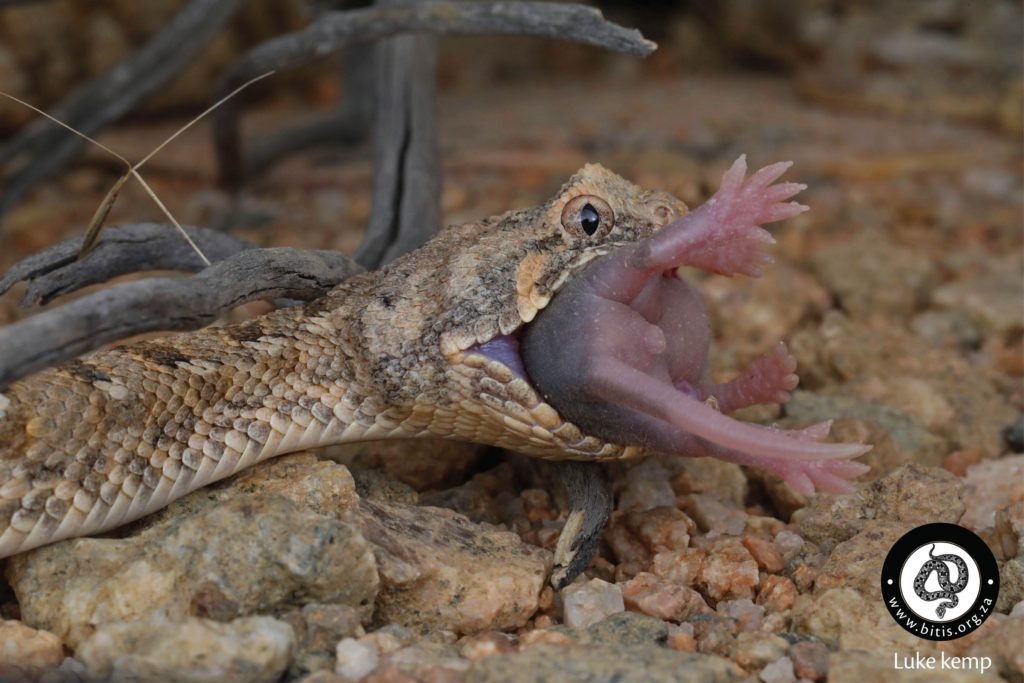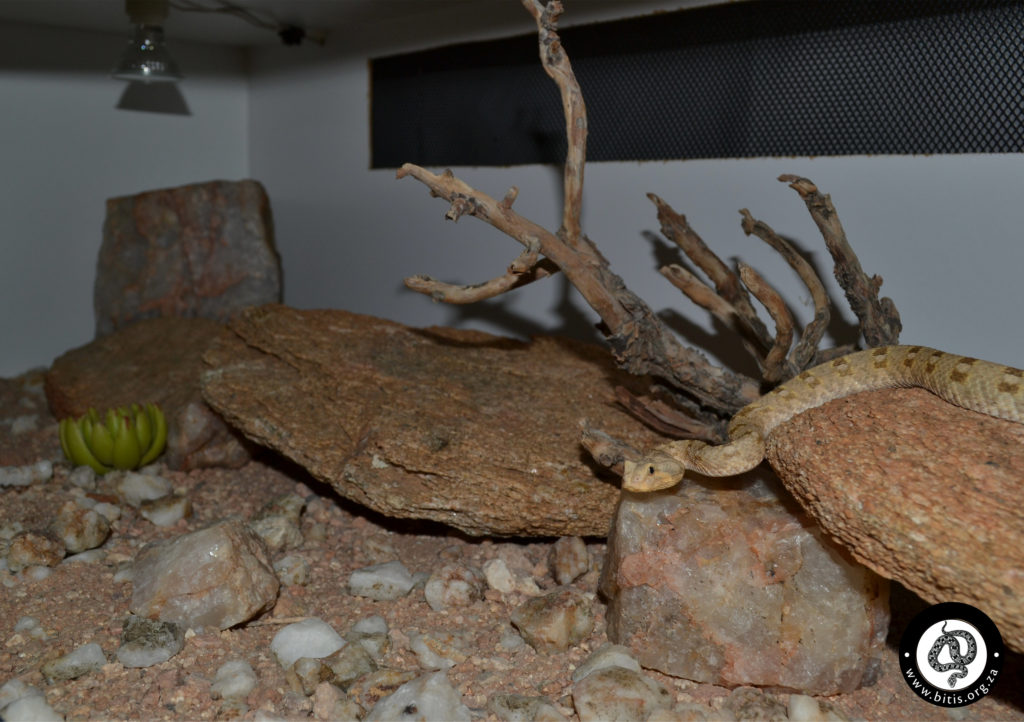Desert Mountain Adder (Bitis xeropaga) - Captive care
This is a secretive species which generally doesn’t like being disturbed, and as a result can become stressed in captivity if disturbed too often. They occur on rocky hillsides and spend little time on bare ground so don’t be shy when providing rocks in the enclosure, especially flat rock slab. If given the option they will almost always choose to lie between 2 rocks as opposed to on sand.
Though not known to be enthusiastic climbers some individuals will climb and even sleep in an elevated position, so give them the option by adding branches. A hotspot of up to 40deg C should be provided in summer and the enclosure should be large enough to allow for a gradient drop with humidity kept below 50%.
Bitis xeropaga mate in late Winter/early Spring with babies typically born in late summer. A brumation temperature of 15deg C is sufficient for breeding. Most babies do not accept pink mice at first, partly due to their small size, often requiring they are started on lizards at first which they will eat live. Babies will generally start transitioning to scented pink mice after 2 months or so and tease feeding is necessary when switching to FT prey.
They do not enjoy being misted but will drink if left to soak in a container with shallow water, though some keepers prefer to spray the side of the enclosure to allow the snake to drink the droplets here. They appear to drink much less than other species.
Keep these babies warm and dry as they can be vulnerable to RI problems.
Please note: This information serves only as a suggestion and is based on input from various experienced keepers. It is important that you gather as much info from various sources before deciding how best to care for your snake. Be sure to check with your local authorities what permits may be required in your area.




